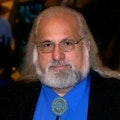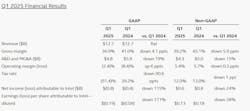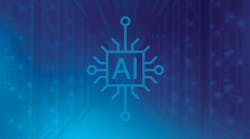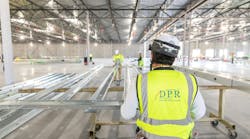New Intel CEO Lip-Bu Tan Navigates Ongoing Changes; Data Center Strategy Faces Uncertainty
Intel is undergoing a significant transformation under the leadership of newly appointed CEO Lip-Bu Tan, aiming to revitalize its data center business amidst mounting challenges.
Since taking the helm in March 2025, Lip-Bu Tan has initiated a comprehensive restructuring of Intel's leadership and organizational framework. Key business units, including the Data Center Group, now report directly to him, streamlining decision-making processes.
Additionally, Sachin Katti has been appointed as the new Chief Technology and AI Officer, overseeing Intel's AI strategy and product roadmap, as well as managing the company's networking and edge computing division.
Strategic Reorganization
According to industry reports, the relatively recently formed Data Center and AI Group within Intel is going to be split into two groups, with the Data Center Group being focused on CPUs and the AI Group being focused on AI accelerators and related products.
Perhaps more importantly, the Data Center Group will report directly to Tan, removing a layer of bureaucracy added when Intel veteran Michelle Johnston Holthaus was named CEO of Intel Products, which, at the time included the data center efforts along with the company’s core chip design units.
This is part of an ongoing effort to flatten the company’s structure. Tan, in a message to all company employees titled “Our path forward,” said:
As we refocus on engineering, we will also remove organizational complexity. Many teams are eight or more layers deep, which creates unnecessary bureaucracy that slows us down. I have asked the ET to take a fresh look at their respective orgs, with a focus on removing layers, increasing spans of control and empowering top performers. Our competitors are lean, fast and agile — and that’s what we must become to improve our execution. I’ve been surprised to learn that, in recent years, the most important KPI for many managers at Intel has been the size of their teams. Going forward, this will not be the case. I’m a big believer in the philosophy that the best leaders get the most done with the fewest people. We will embrace this mindset across the company, which will include empowering our top talent to make decisions and take greater ownership of key priorities.
Weathering the Financial Challenges
Intel reported a net loss of $821 million in Q1 2025, despite generating $12.7 billion in revenue. In response to ongoing financial pressures, financial news outlets are reporting that the company plans to lay off over 20% of its global workforce, amounting to more than 21,000 employees. Tan continued:
There is no way around the fact that these critical changes will reduce the size of our workforce. As I said when I joined, we need to make some very hard decisions to put our company on a solid footing for the future. This will begin in Q2 and we will move as quickly as possible over the next several months.
The focus of the critical changes to the company are to get back to its roots as an engineering driven business. Tan has made engineering a component of his Executive Team and has announced the goal of making “engineers more productive by removing burdensome workflows and processes that slow down the pace of innovation.”
Gauging the Changes to Intel's Business
It also appears that Intel will be concentrating its hardware efforts on its well-established business lines, such as CPUs, having sold a 51% stake in its Altera programmable chip business to private equity firm Silver Lake for $4.46 billion. This divestment allows Intel to concentrate resources on its primary operations.
Intel had acquired Altera in 2015 for $16.7 billion; Silver Lake’s purchase price values the company at only half that number. While some analysts are predicting that the FPGA market could more than double over the next 5 years Altera revenue for 2024 came in at just over $1.5 billion.
In the near term the extensive layoffs and organizational changes may lead to short-term disruptions in project execution and client service. Rapid execution on the announced changes will minimize potential disruptions, and a focus on engineering and innovation should offer long-term improvements.
The overall impact of the company changes on the data center business will also be impacted by how well a slimmed-down, streamlined company can maintain its focus. For example, the company also recently announced its second-generation AI-enhanced system-on-chip (SoC) for software-defined vehicles.
This SoC features the industry's first chiplet architecture, offering scalable performance and advanced AI capabilities for this automotive application. Based on the announced reorganization, this should fall under the auspices of the AI Group, but other technology companies have developed data center solutions focused on providing backend technologies for automative applications.
If it sounds like Intel is going to need to make significant changes to the company structure an operations to be successful in the future, CEO Tan agrees with that, saying:
I came on board knowing full well this would be the most challenging job of my career, but also the most motivating and fulfilling — because we have opportunities ahead that most people don’t get in their careers. I’m talking about the opportunity to fundamentally reinvent an industry icon. To pull off a comeback that will be studied in business schools for generations to come. To create new technologies and deploy them at scale to change the world for the better. Intel was once widely seen as the world’s most innovative company. There’s no reason we can’t get back there, so long as we drive the changes needed to improve. It’s going to be hard. It will require painful decisions. But we will make them knowing it’s what we must do to serve our customers better as we build a new Intel for the future – and I have great confidence in the power of our team and our people to make it happen.
Lean and Mean
The chip business has become increasingly competitive since the early days when purchase decisions were almost strictly based on speeds and feeds. System integration with competing products, building entire ecosystems, and driving cutting-edge technology into customers' hands is more important than ever.
Intel is no longer the 800 lb. gorilla in the room in their industry, and needs to take on more of the characteristics of the lean aggressive start-up business in order to make the necessary changes to become more competitive. It won’t be an easy transition.
Intel’s Direct Connect 2025 Delivered Key Insights on Innovation, Foundry Advancements
On April 29, 2025, Intel hosted Direct Connect 2025, a high-profile gathering of executive leaders, customers, industry technologists, and ecosystem partners. The exclusive event highlighted Intel’s vision for the future of technology, with a focus on semiconductor innovation, foundry services, and next-generation manufacturing.
The livestreamed morning keynotes opened with an address from Intel CEO Lip-Bu Tan, who outlined the company’s strategic priorities. Following his remarks, Naga Chandrasekaran, EVP, CTO, and GM, and Ann Kelleher, EVP of Foundry Technology & Manufacturing, delivered a joint presentation on Intel’s technological roadmap. Kevin O’Buckley, SVP and GM of Foundry Services, closed the session by reviewing the company’s progress over the past year.
The event underscored Intel’s efforts to tackle industry challenges, accelerate innovation, and enhance operational efficiency through its advanced solutions. Attendees gained critical insights into how Intel is shaping the future of computing and semiconductor manufacturing.
About the Author




